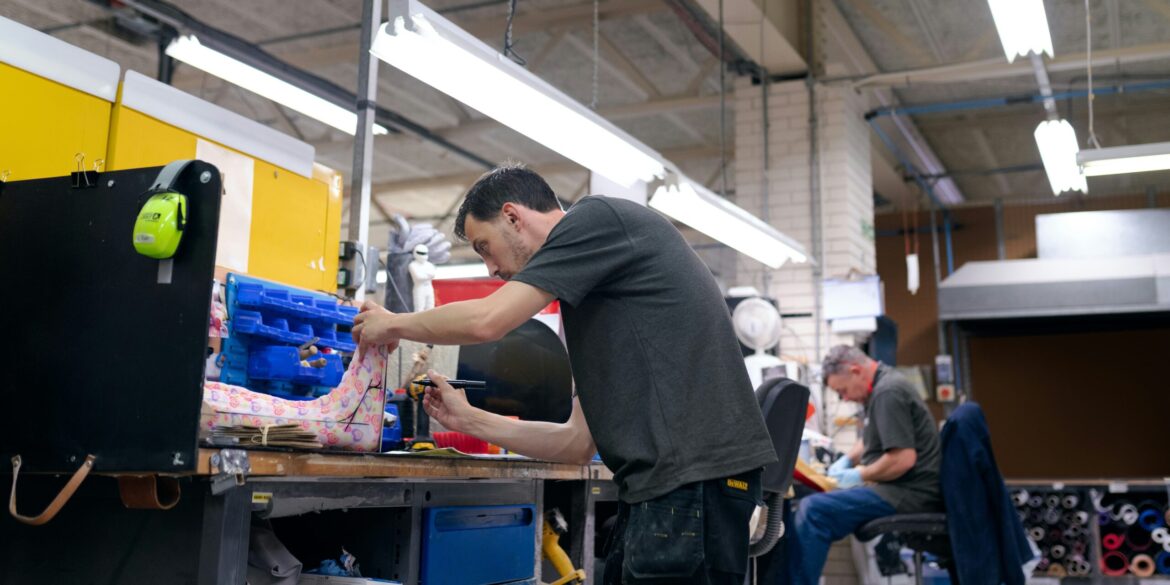A new report from the U.S. Small Business Administration (SBA) reveals that over 8,000 patents were filed by small enterprises in the first quarter of 2025—a remarkable 12% increase compared to the same period last year. This surge reflects a significant shift in American innovation, with grassroots and agile entrepreneurial ventures increasingly taking the lead in technological advancement.
According to SBA Chief Economist Dr. Ellen Matthews, “Small businesses are not just surviving; they are thriving by innovating faster and more efficiently than ever before.” Her remarks emphasize how smaller companies, often considered underdogs in research and development, are now driving a substantial portion of the country’s patent activity.
Historically, R&D was dominated by large corporations with deep pockets and specialized teams. Today, that landscape is rapidly changing. Expanded access to capital—through SBA-backed low-interest loans, targeted federal grants, and a surge of venture capital investments—is helping startups push their ideas to market faster than ever. These financial tools are enabling small firms to take calculated risks in high-growth areas.
Technology itself has also leveled the playing field. Affordable AI tools, cloud computing, and 3D printing are reducing costs and development time. What once required a full lab and dedicated tech staff can now be achieved with open-source platforms and a lean development model. As a result, more small firms are able to prototype, iterate, and file patents with the same agility as larger organizations.
Strategic partnerships are further propelling this momentum. Small businesses are increasingly collaborating with universities, federal laboratories, and nonprofit incubators to access research infrastructure, navigate complex intellectual property pathways, and accelerate commercialization. These collaborations are particularly beneficial in managing patent costs and accessing specialized expertise.
This innovation wave is not limited to a single industry. The SBA report spotlights health tech as one of the most active sectors. Small firms are driving developments in diagnostic tools, telehealth equipment, and regenerative medicine devices—areas with high market demand and strong potential for social impact. In one example, a Minnesota-based startup recently patented a handheld diagnostic scanner capable of delivering real-time health assessments in underserved regions.
Read Also: https://bizrecap.com/u-s-businesses-accelerate-ai-integration-amid-economic-shifts/
Clean technology and advanced manufacturing are also experiencing a patent boom. Entrepreneurs are creating biodegradable materials, optimizing circular economy models, and designing energy systems that decentralize power generation. One standout case involves a Colorado firm that developed a solar-powered water purification unit now under review for large-scale disaster relief use.
Software, cybersecurity, and fintech remain fertile grounds as well. Smaller players are introducing specialized applications to address gaps overlooked by larger firms. From blockchain-based identity verification to niche AI applications in logistics, these innovations demonstrate the versatility and reach of small-scale tech development.
Geographically, the report highlights innovation hotspots emerging outside of traditional tech hubs. States like Maryland and Massachusetts lead in patents filed per capita, thanks in part to strong academic ecosystems and state-led innovation incentives. These regions foster collaboration among researchers, local governments, and private investors—creating fertile ground for startup-led R&D.
Beyond patent filings, the surge is contributing to broader economic gains. The SBA estimates that over 350,000 new jobs were created by small businesses in Q1 2025 alone. Wages in tech-intensive sectors are rising, and job quality is improving, as small firms expand into high-skill roles. Economists view this as a sign that small-business innovation is translating into tangible economic benefits.
Government policy has been instrumental in enabling this trend. The SBA’s expanded 7(a) loan programs and targeted innovation grants have significantly reduced financial barriers. In parallel, venture capital firms are increasingly drawn to early-stage ventures due to their high-growth potential and niche market focus.
However, challenges remain. Many small businesses still face barriers in scaling production, managing patent portfolios, and weathering supply chain volatility. The SBA acknowledges these hurdles and has pledged to enhance support services, including legal guidance on intellectual property and mentorship programs focused on commercialization strategies.
Despite these obstacles, the trajectory is promising. The over 8,000 patents filed in the first quarter of 2025 suggest not only a record pace of innovation but also a paradigm shift in who leads that innovation. The growth rate of patent filings by small businesses now exceeds that of larger corporations—marking a historic reversal in the traditional innovation hierarchy.
This development underscores a broader transition toward a decentralized, resilient innovation economy. By putting powerful tools and funding within reach of small businesses, the U.S. is fostering a culture of democratized invention—one that delivers not just technological breakthroughs, but economic resilience and social progress.

